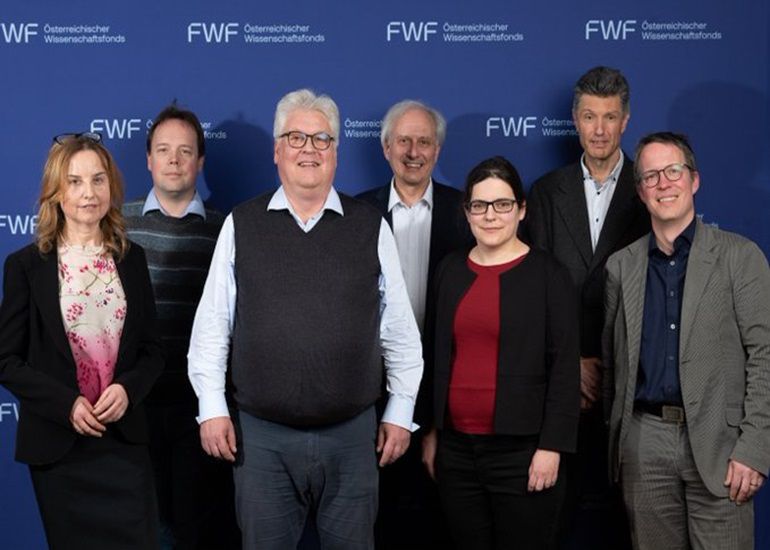Cluster of Excellence for AI Approved - With Strong Participation of TU Wien
The FWF is funding large-scale scientific projects with its “Cluster of Excellence” funding scheme. These include a new research project on Artificial Intelligence, in which TU Wien and CAIML will play an important role.

It is by far the highest endowed research funding in Austria: the Clusters of Excellence, which are funded by the Austrian Science Fund FWF, are designed to run for five years and have a total budget of 35 million euros. The FWF contributes 20 million of this, with the rest coming from own funds. TU Wien has already been extremely successful with this funding program: the Cluster of Excellence MECS, which was approved last year and focuses on research into new materials for the energy transition, was officially opened on 3 May. TU Wien is also heavily involved in the “Quantum Science Austria” Cluster of Excellence approved in 2023.
This year, two further clusters of excellence were approved - and TU Wien is once again involved: the “Bilateral AI” cluster, led by JKU Linz, is set to deliver important new findings in the field of artificial intelligence. TU Wien will play an important role in this major project.
Two Different Approaches in AI
The name of the Cluster of Excellence “Bilateral AI” already summarizes the central concern of the research: It is about harmonizing the two sides of AI research.
“There are two fundamentally different approaches in artificial intelligence research,” explains CAIML Board Member Prof. Thomas Eiter from the Institute of Logic and Computation at TU Wien, co-director of the new Cluster of Excellence. “One is symbolic AI, which works with clearly defined logical rules, and the other is sub-symbolic AI, which involves training a machine with the help of large amounts of data.”
Symbolic AI works with clearly defined rules: A chess computer, for example, is programmed with the rules of chess and cannot break them. Mathematical logic plays a central role here: the computer works symbolically - i.e. with clearly defined objects, such as chess pieces and the moves they are allowed to make according to the rules of chess, or, for example, with lists of films from which a suitable one is to be selected. The algorithm solves the task in a logically comprehensible way. This has the advantage that the AI’s results can be explained and understood afterwards.
Machine Learning and ChatGPT
On the other hand, there is machine learning. This often involves improving algorithms using large amounts of data, models and simulations. First, the algorithm is “trained” on specific data, only then is it able to deliver meaningful results. Statistics play a decisive role here.
Whether the object with which the algorithm works has a certain logical-semantic meaning (such as a chess piece in a chess game) is not important. This “sub-symbolic” AI is quite pragmatically about finding the optimal solution, measured against certain predefined criteria.
ChatGPT is probably the most famous example of this type of artificial intelligence. The fact that ChatGPT can produce language is not because the algorithm has memorized logical, symbolic relationships between terms. It is the result of training on huge amounts of data. This method has proven to be extremely powerful, especially in recent years, but it has the disadvantage of not being logically comprehensible. It is not possible to explain conclusively how the AI arrived at a particular answer.
The Best of Both Worlds
“For the future of artificial intelligence, it will be important to combine these two approaches,” Prof. Thomas Eiter is convinced. The new Cluster of Excellence will now make an important contribution to this. In the major inter-university project “Bilateral AI”, the JKU Linz will contribute a great deal of expertise from the field of sub-symbolic AI and machine learning, while the TU Vienna will primarily contribute its recognized strength in the symbolic field and, with around 23%, has the second largest share in the project after Linz. IST Austria, the Vienna University of Economics and Business, TU Graz and the University of Klagenfurt are also involved in this project.
TU Wien has already founded the Center for AI and Machine Learning (CAIML) in 2021, where research is being conducted into linking different approaches in artificial intelligence research. By participating in the new Cluster of Excellence, this research topic will now be further strengthened and expanded at TU Wien.

